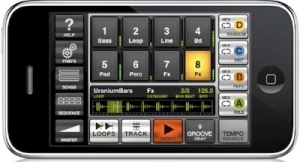A year and a half ago I wrote a post about the Top 5 Music Discovery Sites. A lot has happened since then: MySpace acquired iLike, MySpace acquired (and buried) iMeem (and then brought back their users’ playlists), Google Music Search was born, and the mobile music space exploded all over us thanks to the iPhone and the whole new world of opportunities now open to iPhone app developers… to name just a few things.
So, what are the best options available for music discovery right now? Here is my updated list:
Pandora
The customizable internet radio station that knows your musical taste so well it’s just plain creepy. Assuming you use Pandora somewhat actively, i.e. click the thumbs up/thumbs down buttons or suggest songs, the service is shockingly adept at playing music you will dig. Cool features like station gifting and the ability to share songs via email, Twitter, or Facebook give it a social slant. Links to iTunes and Amazon let you quickly purchase songs for your personal collection. And of course, if you’re striving for musical snobbery, Pandora not only tells you all sorts of fun facts about the artist, the album, or the song, but also explains (in terms probably only the serious musicologists among us would understand) exactly why it recommended a particular song. Oh, and Pandora is coming soon to a car near you.
Mobile Status: Android, Blackberry, iPhone, Palm, Windows and more.
thesixtyone
Our current favorite place to discover sick ass new music is thesixtyone, which purports to make music more democratic: “artists upload their work for review, but, rather than allow a stuffy suit in a boardroom to decide what’s good, thousands of listeners do.” The site also rewards listeners who are active participants by allowing them to “earn reputation, level up [their] influence, and collect badges,” making it almost like a Yelp culture for music fans. You can connect your account to Facebook, share what you’re listening to etc. If you’re an artist planning to put your music on t61, here’s what you should know.
Mobile Status: Nothing yet, but fans are chomping at the bit (check out the comments on their Facebook note.)
Midomi and Shazaam
I’m grouping these two together because they are different versions of the same thing. While Shazaam seems to have the most traction (likely due to its simplicity and clean look and feel), Midomi has more features. It can recognize not only that song playing on your car radio, but also singing, whistling, and humming. Although it’s very gratifying to instantly identify a song you hear, the real power in this technology lies in the actionable options presented along with the search result. Once you’ve identified the song, you can buy it, share it, watch the video etc.
Mobile Status (Midomi): Android, iPhone, Nokia, Windows.
Mobile Status (Shazaam): Android, Blackberry, iPhone, Nokia.
Grooveshark
First of all, let me just say that I am not a fan of the current design. Specifically, it’s the sidebar on the left that I find very aesthetically displeasing. Besides that, however, Grooveshark is a very cool service. You can upload your own music collection and stream it from wherever. Or search for music and stream it instantly. Of course it has all the social goodies as well, including embeddable widgets for your blog.
Mobile Status: Android, Blackberry.
Hype Machine
This clever little site is a music blog aggregator. As they say, “every day, thousands of people around the world write about music they love — and it all ends up here.” Go ahead. Nerd out. Worth mentioning, also, is RCRD LBL, which is a “network of ad supported online record labels and blogs offering completely free music and multimedia content from emerging and established artists.” Yes, free mp3s.
Mobile Status: iPhone app in the works?
Honorable Mentions:
Blip.fm
Blip.fm is essentially Twitter for music, allowing you to share tracks (along with brief comments and messages) with other users in a real-time stream. Naturally, it’s also integrated with Twitter and Facebook, so you can showcase your awesome musical taste by becoming the DJ and showing off your skillz. Or, you can use the service as a music discovery tool by listening to other DJs.
Mobile Status: iPhone (“Boombox Pro”)
Amazon Music
Amazon created a lot of buzz early on with their recommendation engine for books and things. Why shouldn’t it work just as well for music? Turns out it does… In fact, it’s a pretty solid option. You can listen to samples, plus do all the usual nifty Amazon-y things.
Mobile Status: iPhone
JamLegend
While JamLegend (the computer nerd’s answer to Guitar Hero & Rock Band) is first and foremost a game, it’s also a totally viable place for music discovery. As you sort through featured or new artists and songs, you might just stumble upon some great new stuff… You might also get sucked in and spend 12 hours pressing the 1, 2, and 3 keys on your keyboard. Consider yourself warned.
Mobile Status: JamLegend hasn’t gone mobile, but RockBand has an iPhone app, and of course there is Tap Tap Revenge (the Guitar Hero-style game).
How will YOU discover new music in 2010?





